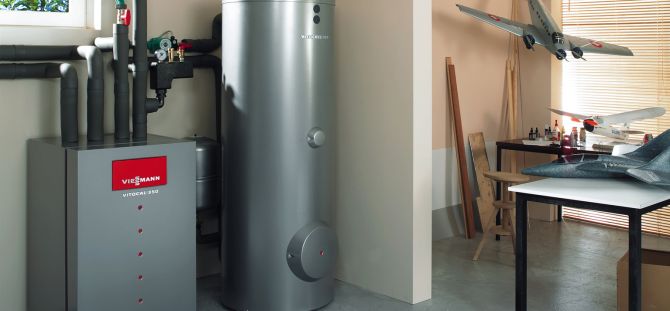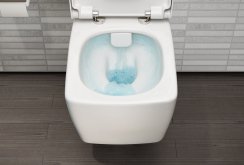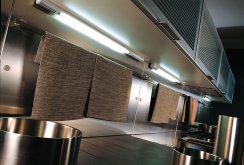A brief overview of popular types of water heating equipment
When choosing this category of household appliances, the functional characteristics of structures, as well as the ergonomics of models, are taken into account. According to the principle of action, water heaters are divided into 2 types:- electric;
- gas.
- cumulative;
- flowing.
- electric storage water heaters - the boiler is a thermos with heating. The unit is convenient in that it allows you to constantly have the right amount of hot water on hand;
- electric instantaneous water heaters - water is heated in a stream. The device is able to meet the maximum needs for hot water, providing access to an unlimited amount of resource immediately after opening the tap;
- gas storage water heaters - according to the principle of operation, they are similar to electronic analogues of equipment. At the same time, they have greater power compared to the latter, operate on liquefied or main gas;
- gas instantaneous water heaters - the device is able to maintain the temperature of the feed stream, since the flame intensity of the gas column is automatically controlled by a modeling burner depending on the flow of water;
- indirect heating boilers - the resources of the central heating system are used as an energy carrier.
Electric storage water heaters
The principle of operation of boilers is simple: a thermocouple inside the housing heats the water in the tank to a predetermined temperature. Next, the thermostat fuse is triggered and the unit turns off. Depending on the volume of the tank, it takes time from 35 minutes to 6 hours to heat water under normal conditions. For rapid heating, the turbo mode is provided. The current catalog of boilers includes a model range of equipment for apartments, country houses and enterprises. Boilers vary in various ways. Volume of the tank:- compact options of 5-15 liters;
- 20-50 liters for a small family;
- up to 200 liters for a large number of consumers.
- stainless steel, titanium coated, enamel;
- glass ceramics, plastic.
- electronically controlled display;
- manual regulators of water temperature and heating intensity.
- horizontal
- vertical.
- in the form of a cylinder;
- rectangular;
- rounded
- flat.
- wall constructions - a convenient format for oversized models;
- floor constructions - represented by samples with a tank volume of 100 liters or more.
Electric type instantaneous water heaters
The device is distinguished by the rapid preparation of a hot resource: the water stream is heated intensively, passing through a thermocouple. Automation turns off the heating when the water supply from the tap stops. In comparison with the analogues of the accumulative type, flow-through models of units are distinguished by high power and compact dimensions.A brief overview of the characteristics of instantaneous water heaters
Flasks:- metal options transfer heat better than plastic;
- the most durable stainless steel flasks;
- copper flasks are most effective, in which water is heated with greater intensity than in samples from other materials.
- equipment performance and heating intensity vary depending on the temperature of the cold inlet water;
- Several heating modes and 2-step protection are provided.
- the design is equipped with a two-color display, which reflects the mode of the set heating temperature;
- with the help of the regulator you can select the necessary parameters, then the automation provides the water supply of the desired temperature.
Gas storage water heaters
The equipment works on a single principle with an electronic counterpart, it differs only in the type of fuel: the water is heated in a thermal tank using a gas burner. Unit Specifications:- by type of combustion chamber - closed and open. In the first case, there is no need to supplement the design with an air outlet, which determines the availability of installation in comparison with the second;
- according to the installation method - wall and floor varieties;
- ignition - piezoelectric or electric. The second option is safer and more convenient: the flame automatically turns on and off when the crane position is changed.








